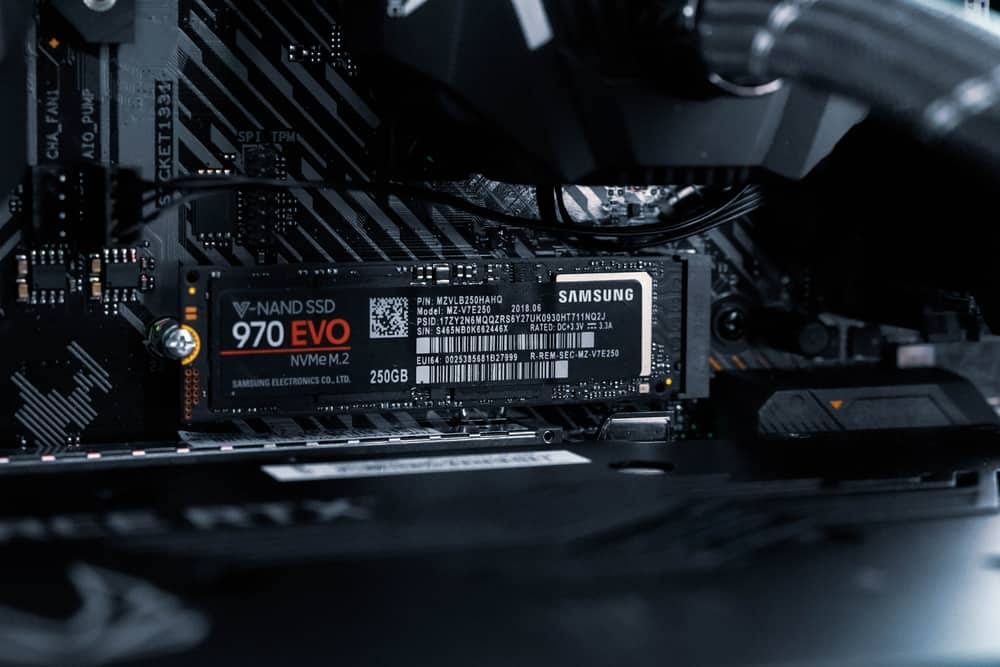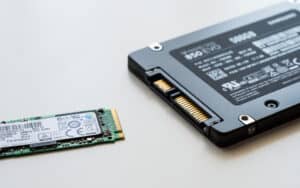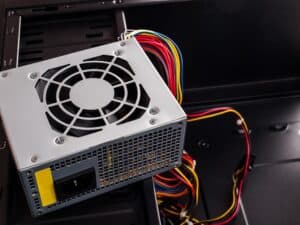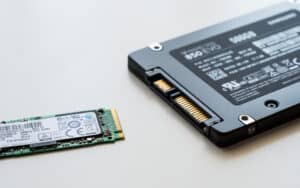
NVMe (Non-Volatile Memory Express) and SSDs (Solid State Drives) are among the top storage devices used in computer systems. However, the two are considerably different from each other. NVMe uses interfaces and drivers for storage, while SSD stores data using integrated circuits. As a result, NVMe is efficient, has increased performance, and is faster than SSDs.
With the costs of NVMe SSDs dropping, many computer users want them on their PCs. However, unlike HDDs and older SSDs, which connect to motherboards via SATA cables, NVMe doesn’t connect via SATA cables. Hence, it’s essential to know if motherboards support NVMe.
In this article, we will let you know how to check if your motherboard supports NVMe and also let you know some of the different storage devices available.
How To Check if a Motherboard Supports NVMe
All motherboard manufacturers will publish a specification sheet for each motherboard they make. Whether or not a specific motherboard supports an NVMe SSD will be listed under either the “storage” or “hard drive” section of the sheet.
There, it will list what type of hard drives the motherboard supports. Below are some of the methods to determine if your PC supports NVMe.
Method #1: Check the SSD Types
However, since there are different types of SSDs, you have to look beyond SSD to ensure the motherboard has a slot for the NVMe SSD in specific. SSDs can be variations of SATA SSDs, NVMe SSDs, or PCIe SSDs.
Thankfully, the NVMe SSD slot and the PCIe SSD slot are the same, so the specification sheet may only list one. It may also read as PCIe NVMe SSD. NVMe utilizes PCIe lanes, similar to how a GPU connects to the motherboard.
Method #2: Check the type of M.2 Slots
Unfortunately, because a motherboard specification sheet says that it has M.2 slots, not every M.2 slot supports NVMe.
Some M.2 slots only support a certain type of SATA SSD, which is still a form-factor SSD with the connector built onto the drive, as you would see with RAM and NVMe SSDs. However, the connection for SATA SSD is different from NVMe SSD, as it is derived from SATA cables rather than PCIe lanes.
So, while some M.2 slots only support SATA, other M.2 slots only support NVMe. Sometimes, the M.2 slot will support both.
Method #3: Check the Physical Size of the NVMe SSD
Looking outside the drive’s storage space, the physical size of the NVMe SSD matters in some instances. The specification sheet for the motherboard should list a string of numbers. This will typically read something like “type 2242/2260/2280/22110.” Those numbers refer to the physical size of the drives it can fit.
The first two numbers refer to the width, and the last two or three numbers refer to the length. As in the case listed above, the motherboard will support all standard sizes of NVMe SSD.
Smaller, form factor motherboards may only support small and medium-sized NVMe SSDs, so keep that in mind when purchasing parts. Forcing a drive that is too long into the build will result in a broken drive.
Method #4: Check the Generation of the Chipset
Like other computer components, SSDs have generations. When purchasing parts for a new build or upgrading an older build, you have to check to see if the motherboard supports the generation of NVMe SSD you are looking to purchase.
This matters less if you are buying all of the parts simultaneously but is a crucial thing to check for when upgrading your existing build. If the motherboard is too old, while it may support NVMe, it may not support the latest generation of NVMe, in which case, it will not recognize the drive.
Generation 3 NVMe SSDs utilize PCIe 3.0 protocols, whereas Generation 4 NVMe SSDs function with PCIe 4.0 protocol. Generation 4 is faster, but it won’t be seen on older motherboards. Not even all newer motherboards come with 4.0 protocols as of yet.
Method #5: Check for Other Options Outside of the Specification Sheet
Unfortunately, no. If you do not remember what type of motherboard you have and are guessing based on looks, you may be out of luck. Looks can tell you if the M.2 slot supports NVMe and roughly how long of a drive you can fit. But the specification sheet will list out both of those and what generations the motherboard supports.
While guessing and testing is an option, that is a lot of time, money, and risk of failure.
Conclusion
The easiest and most surefire way to check if your motherboard supports NVMe is to look up the specification sheet and check. Even if you have lost the sheet that came with the motherboard, you can find the information online on the manufacturer’s website or other websites.








